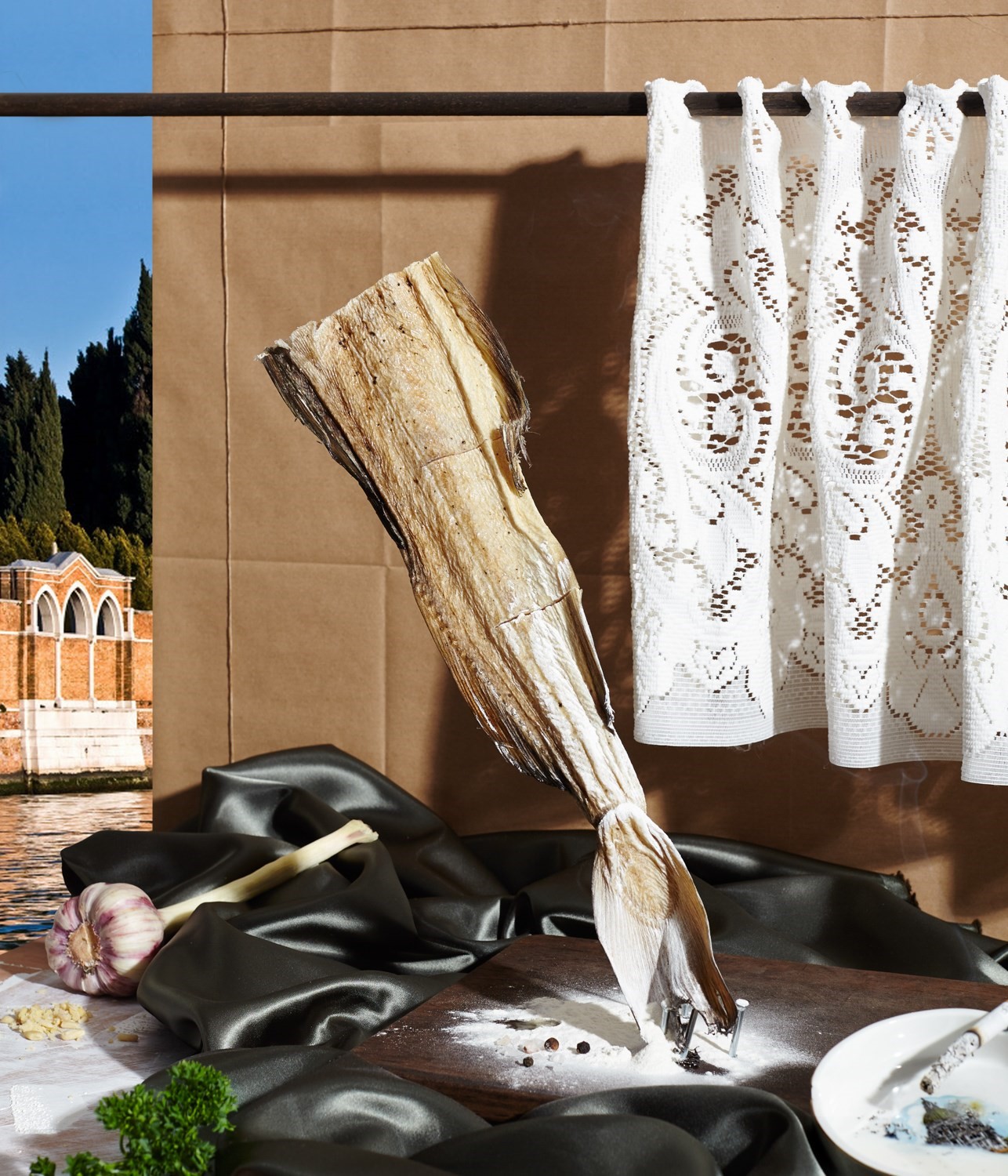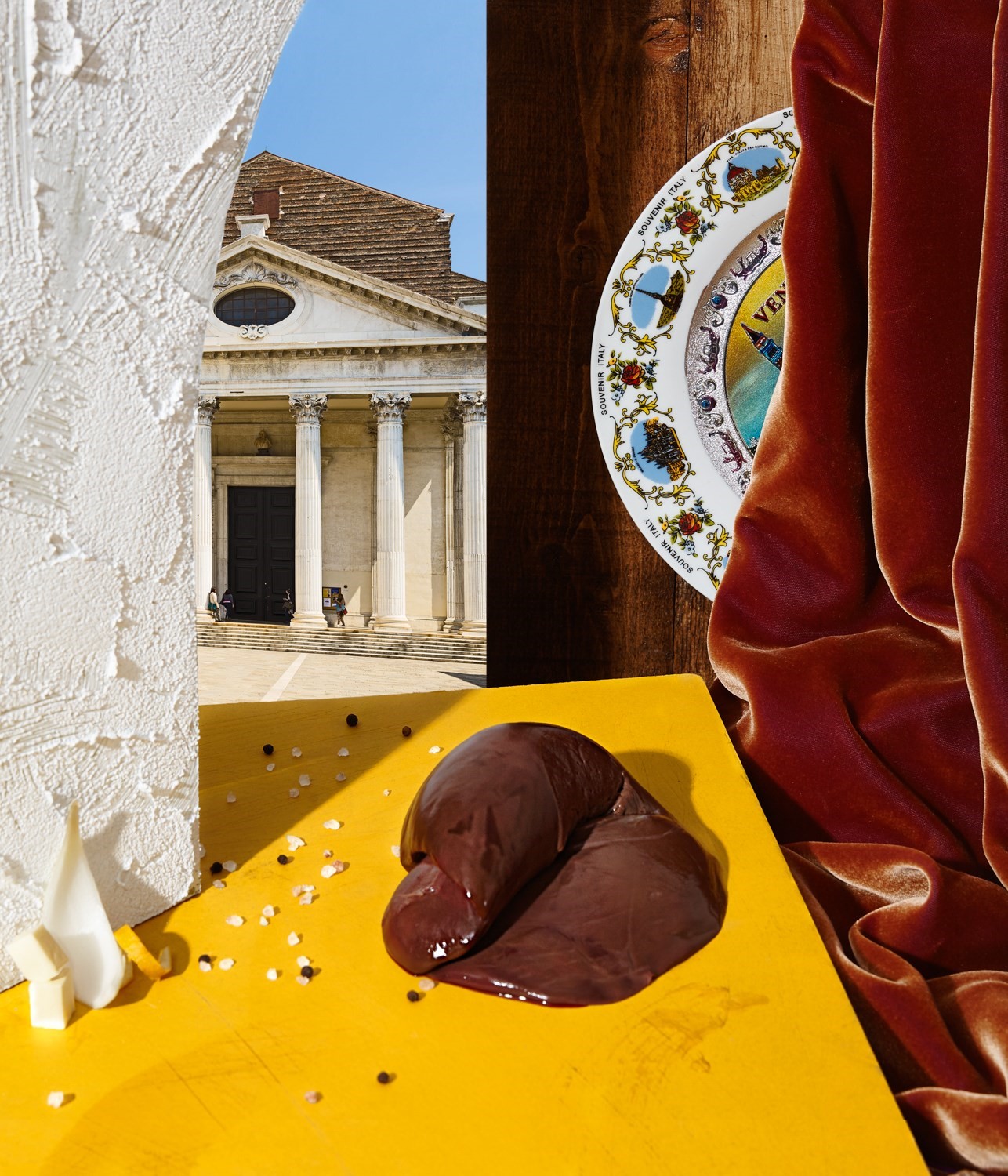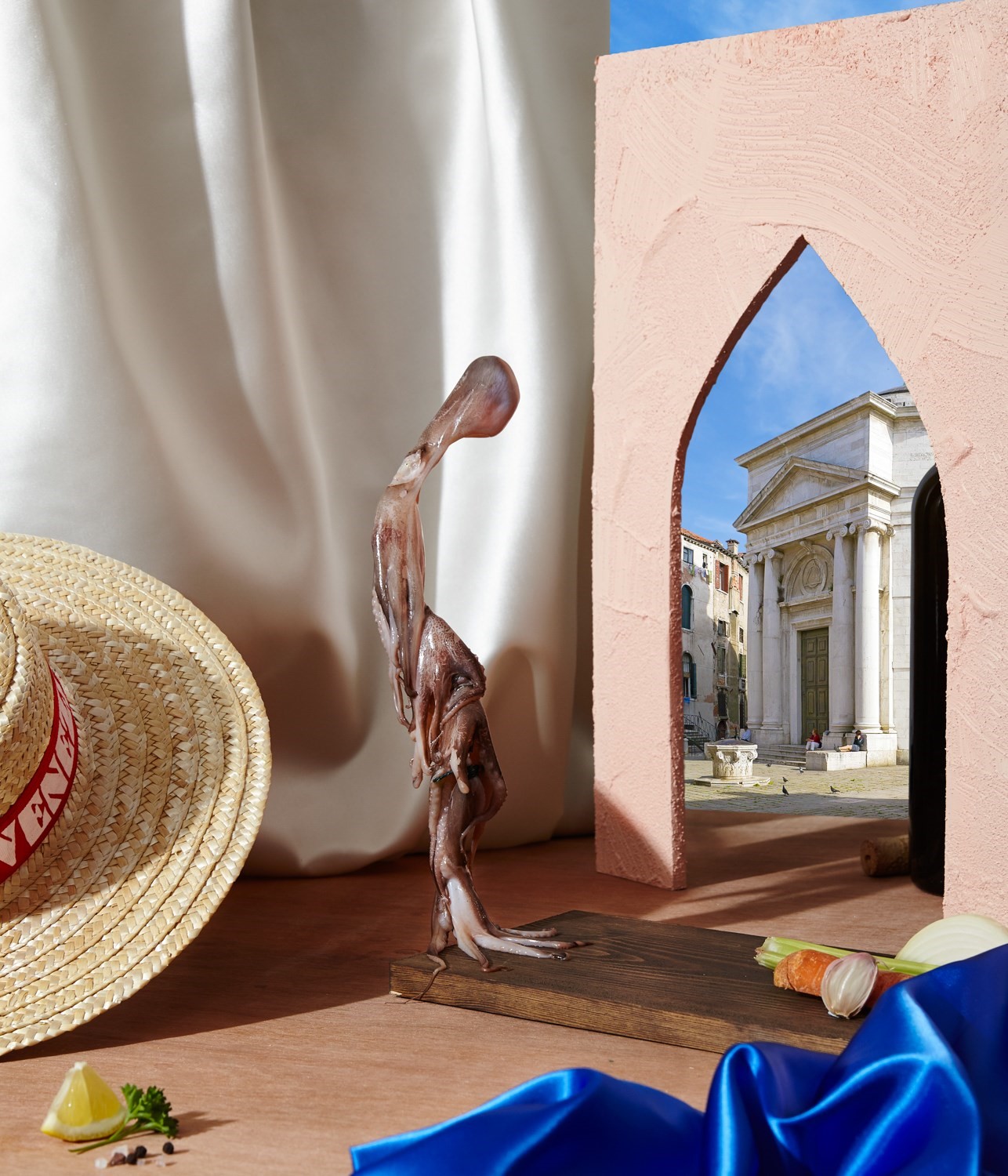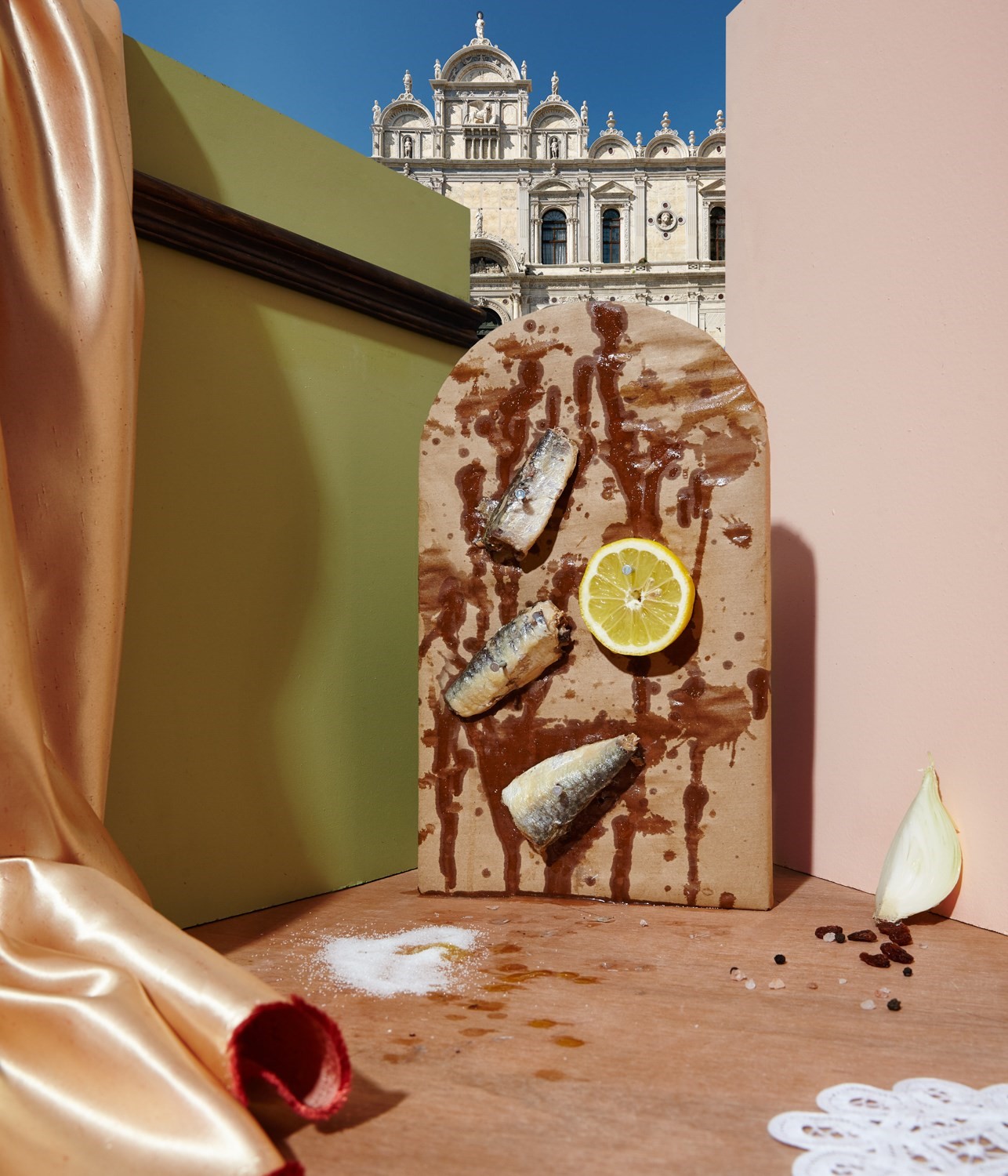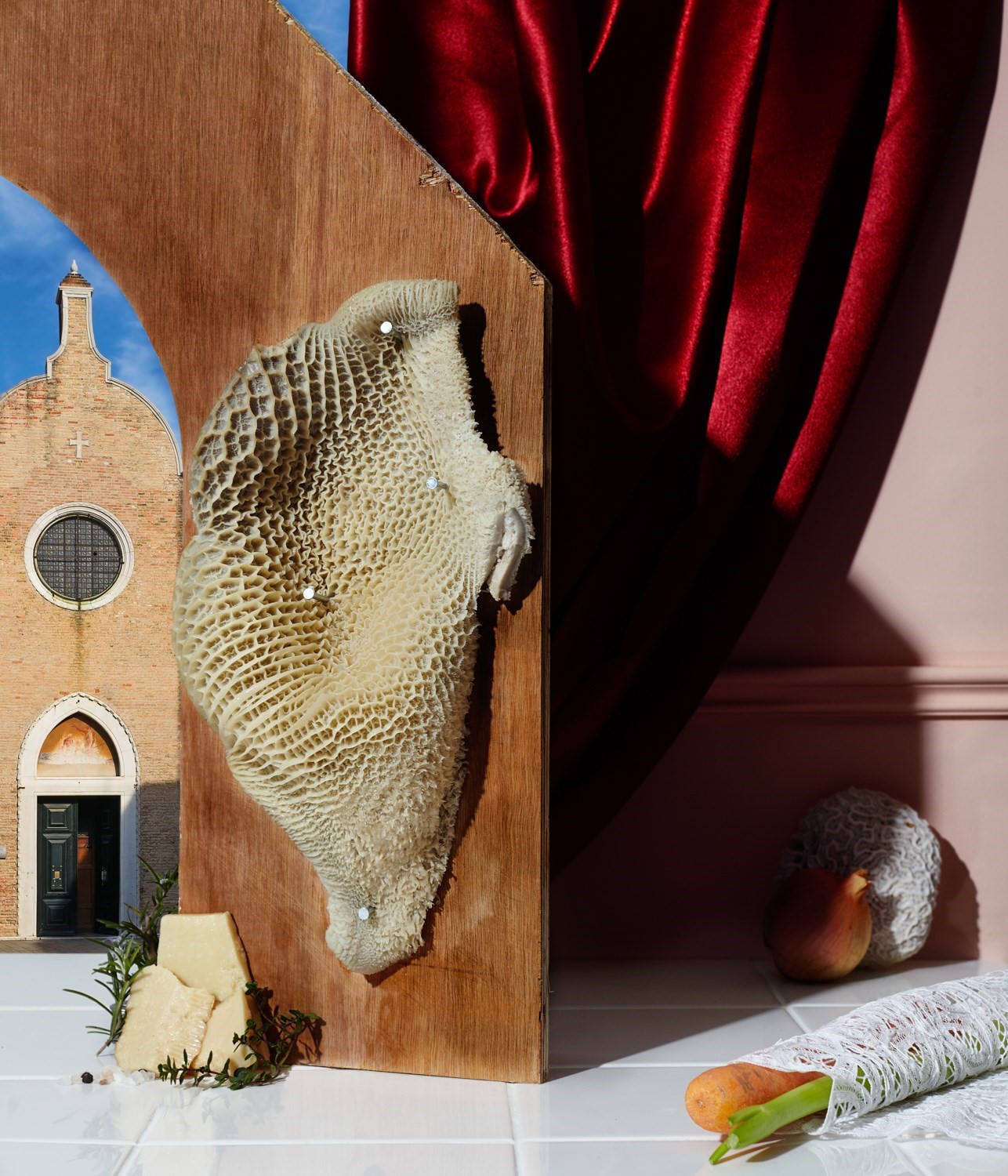“Crùo means raw, or crude, in Venetian dialect,” Italian photographer Federico Floriani tells me over the phone from Porto, where he’s currently based, explaining to me the reasoning behind the title of a new photographic project he has just finished with his partner and fellow image-maker Francesco La Porta. Together, they work under the moniker ‘Saòr’ – a term which “means taste, but also sauce”. It seems an appropriate twinning of words to describe the pair, whose new series is focused entirely on the raw ingredients which make up traditional and commonly eaten Venetian dishes, from tripe to sardines. Tasty indeed.
“Francesco and I met in Venice this winter through a friend,” he continues. “We both love the city – Francesco is properly from Venice, whereas I’m from pretty close to it – and we both love food. We even met in this way; we were in a bar having a glass of wine and eating some traditional snacks. So when we decided to do something together, we just looked to our daily routine for inspiration.” Taking the most basic ingredients behind some of the city’s most archetypal foods, Floriani and La Porta constructed elaborate still life images – tongue-in-cheek tableaux which juxtapose meat, fish and the odd scattered vegetable, with fragments of tourist-like photographs taken in front of the Venice’s best-loved monuments. The series toys with set design and lighting to create deliberately two dimensional, theatrical set-ups. “I brought some props from Venice, mostly to start the dialogue between us, and the rest of the stuff we bought in London, where we shot,” Floriani says.
As for the food itself, they kept to the concept. “It’s simple stuff that you can find everywhere, but it’s really special for us, so we wanted to play a bit with it,” he continues. “We chose the most traditional Venetian dishes. It’s all food that you can find in any Venetian restaurant, not fancy stuff but just really popular cuisine. Stuff that we eat, maybe not every day, but some special dishes, and some street food.” There are few images representing true Italian home cooking too, he explains. “Some of the recipes are complicated – like the codfish, for example, that takes three days to make. You buy it dry, then you put it in water and change the water every three or four hours, then once it’s rehydrated you can start cooking it, but even that takes an entire day. It’s kind of complicated, but it tastes amazing. Some of the others, like the sardines, for example, are really a kind of street food, to take with a glass of wine at the bar. Or the meatballs, they’re super traditional as well.”
True to the series’ name, they also kept refrained from overworking anything. “All the meat and the fish we used is still raw, we just prepared the other ingredients a little bit. One thing I think is important is that we wanted the set design we tried to be really rough, and natural. We didn’t mind about there being stains, so there’s oil on the woodboard, for example, or the tripe is nailed to the background. Everything had to be real, for us – none of those flying objects in a still life that you look at and wonder ‘how does that stay up?’”
